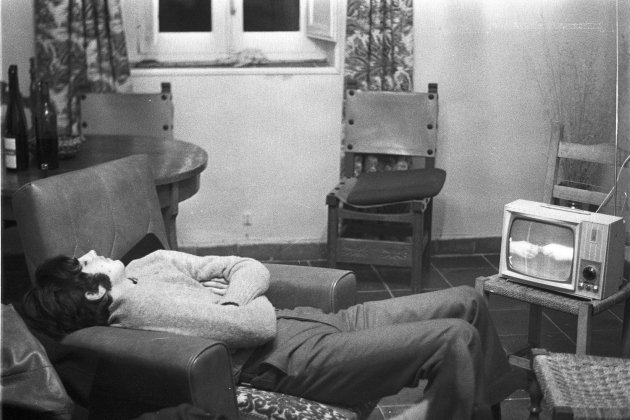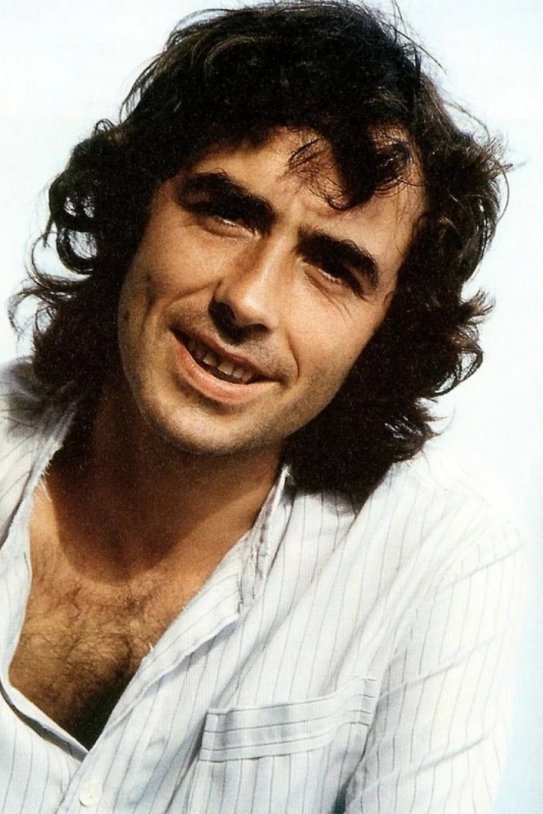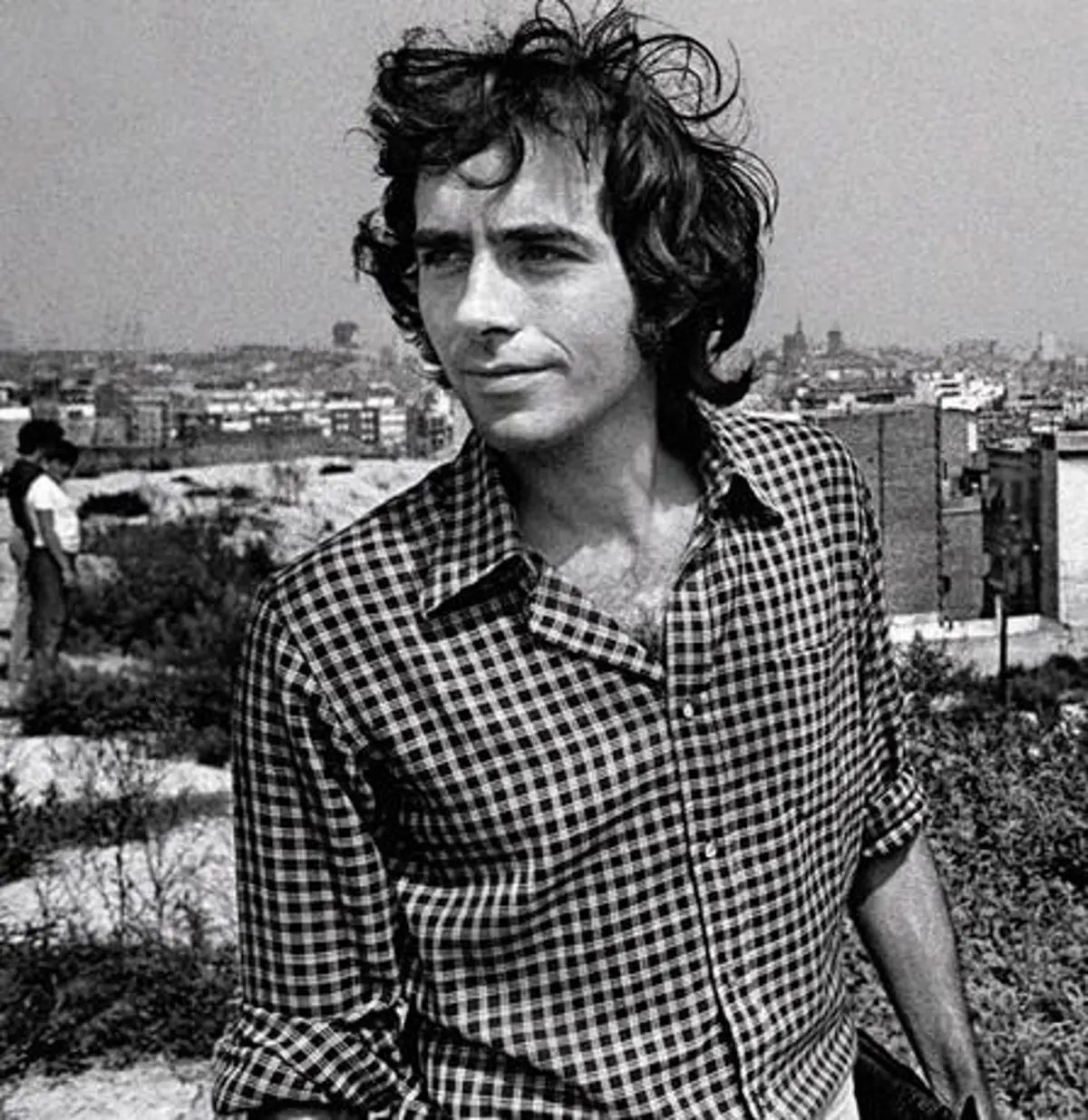Joan Manuel Serrat has left the building. The five-decade career of this legendary Catalan singer-songwriter came to a close before Christmas with three concerts at the Palau Sant Jordi in Barcelona, the final acts in a long farewell tour. An immortal name in Catalan popular culture, his discography is the soundtrack of a time, the second half of the 20th century, and a country, ours. Author of some of the best albums ever released in Catalonia, Serrat, the nano, the kid, from the neighbourhood of Poble Sec who became an idol admired worldwide, is impossible to sum up well, because any attempt to describe his work falls short in the face of its sheer enormity. Even so, let's try to run through the life of one of the greatest legends of Catalonia's mid-century Nova Canço movement, through his 10 most essential albums.
10. Dedicado a Antonio Machado (1969)
The press of the time called the case 'the Serrat bombshell'. It was 1968 and Joan Manuel Serrat was the artist chosen to represent Radiotelevisió Española at the Eurovision festival. The boy from Poble Sec, however, refused to participate unless he was performing the song 'La, la, la' (composed by Dúo Dinámico), in Catalan. With the singer-songwriter's request denied by the Franco regime, the state public media sent the singer Massiel to the gala in London, and he ended up winning the contest with the version in Spanish of the same song.
It was a risky decision, during the dictatorship, but far from ending his career, a few months later Serrat reappeared with one of his most sublime albums: Dedicado a Antonio Machado (1969), a work in which he set to music verses by the Andalusian poet and writer who was persecuted by the fascists in the 1930s. Recorded at the Fonit-Cetra studios in Milan, it is the fifth LP in Serrat's discography, and the second in which he sings entirely in Spanish. Received with skepticism by his phonographic label at the time, Zafiro, it would end up becoming one of his most praised albums, a treasure trove of creations that have since become essential in his repertoire such as Cantares.

9. Cada loco con su tema (1983)
The arrival of the decade of the eighties showed us a Serrat that raised his lyrical costumbrismo to its maximum exponent, with his 17th studio album, this Cada loco con su tema (means something like "Different folks, different strokes") is paradigmatic of this style of sublime but mundane poetry, embedded in everyday life. Probably more optimistic and vitalist than its predecessor, although a step below it on the ladder, Serrat recorded the album in May 1983 at the Eurosonic studios in Madrid.
He was accompanied by his regular collaborators of the time: Josep Maria Bardagí on guitar; Jordi Clua on double bass, Francesc Rabassa on drums and Ricard Miralles on piano and musical direction. A work that stands out for its subtler and simpler orchestration than in previous titles, Cada loco con su tema has three compositions that are essential in any playlist of great hits by Joan Manuel Serrat: Algo personal, De vez en cuando la vida and, very especially, the piece that gives the album its name.
8. En Transito (1981)
A title ("In transit") that is more than descriptive for Joan Manuel Serrat's first album from the eighties. With the advent of democracy, many of the singer-songwriters of the sixties and seventies moved from protest songs to more traditional styles. Serrat, who had never been an artist with a clear political involvement in his work, takes precisely the opposite route. This is the only way to understand the acidic vision of the society of the moment such as A quién corresponda, A usted, Las malas compañías.
Along with these, two songs that would eventually become iconic in the songbook of the kid from Poble Sec: Hoy puede ser un gran dia ("Today might be a great day"), a bright and optimistic composition in the middle of an album with a rather pessimistic tone, and Esos locos bajitos ("Those crazy little ones") with that legendary verse of "niño deja de joder con la pelota, niño que eso no se dice, que eso no se hace, que eso no se toca" ("kid stop bothering people with the ball, kid you can't say that, you can't do that, you can't touch that").

7. 1978 (1978)
A hidden gem in Joan Manuel Serrat's discography, perhaps because it was published in a year, 1978, in which music was beginning to forget the forms of the singer-songwriter's art to surrender to the effervescence of other emerging genres, such as punk. A work, produced in collaboration with the 'master' Josep Maria Bardagí, whose lyrics touch on the more traditional side of the 'Nano', which, despite everything, enters on its own merits in the top ten of Serrat's legacy.
In his repertoire, pieces such as Historia conocida deserve special mention, in which Serrat sets a poem by José Agustín Goytisolo to music; Ciudadano, chronicle of the gray man of that era; Tordos y caracoles, a poetic sputum directed at the conservative classes; and Qué bonito es Badalona, an ode to the city of the Pont del Petroli that Manolo Escobar would eventually cover.
6. Joan Manuel Serrat (Com ho fa el vent) (1969)
There are albums that are justified by a single song. This is the case of the LP Com ho fa el vent ("As the wind does") with its song Paraules d'amor ("Words of love"), which we could well erect as our Catalan response to the Beatles' Yesterday. Com ho fa el vent, however, is not just outstanding because it hides one of the greatest love songs of all time.
Joan Manuel Serrat's third full-length work, Com ho fa el vent, an album that was officially released under the homonymous title - Joan Manuel Serrat - is the creative peak in the first stage of the Poble Sec singer-songwriter's career. A work in which, an important detail in his career, he collaborates for the first time with Ricard Miralles, pianist who would be in charge of the musical direction of some of Serrat's most acclaimed records. An album grafted with youthful effervescence. Vitality, freedom and the enthusiasm for life translated into essential compositions such as Com ho fa el vent, En qualsevol lloc, Marta, Camí avall and the essential Cançó de matinada.

5. Mi niñez (1970)
Joan Manuel Serrat returned from his first tour of South America with a handful of new songs that will end up giving life to one of his most excellent records. An album (in English, "My childhood") that closes his first collaborative stage with the pianist and arranger Ricard Miralles, with whom he would work again years later, and again with more than remarkable results.
Mi niñez is an album which, as a whole, is introspective and autobiographical (not lacking in humor and fine irony), with stand-out pieces such as Cuando me vaya, Los debutantes, Amigo Mío and Fiesta. And at the head of all of them, Señora ("Madame"), his particular love letter to his (fictitious) mother-in-law.

4. Para piel de manzana (1975)
Literally, "For apple skin". In September 1975, Joan Manuel Serrat was in Mexico. In Spain the dictator was dying, but he still had time to sign the last death sentences for 11 FRAP and ETA militants. Six of them had their sentences commuted. The remaining 5 (three members of FRAP: Xosé Humberto Baena Alonso, José Luis Sánchez Bravo and Ramón García Sanz, and two members of ETA: Jon Paredes Manot Txiki and Angel Otaegi Etxeberria) were executed. From Mexico, Serrat condemned the atrocity of the Franco regime, an act that led him to face retaliation by the fascist authorities, forcing him to endure 11 months of exile.
It was in that period that his album, Para piel de manzana, appeared, an album very unjustly forgotten because of the ostracism of which it was a victim, but which deserves to occupy a place of honour in his phonographic decalogue. Pieces such as El carrousel del furo, La Casita Blanca and Malasangre, a song about a dog that escapes from its owner - a clear metaphorical significance - certify this. On August 20, 1976, Serrat returned to Catalonia. A warrant was still out for his arrest, but he was not arrested upon his arrival. "My reunion with Barcelona consisted of concerts in different neighbourhoods of the city, accompanied by Música Urbana", Serrat would explain about a series of six concerts from October 29th to November 18th, at the Palau Blau-grana 2, the Cinema Favència de Nou Barris, the Cinema Teatre Navarra de Pubilla Casas, the Poliesportiu de Sant Andreu, the Club Esportiu Hispano Francès of the Vall d'Hebron and the Palau d'Esports in Montjuïc, concerts he offered in support of different neighborhood causes in Barcelona and L'Hospitalet districts.
3. Ara que tinc 20 anys (1967)
The recording career of Joan Manuel Serrat began in 1965 with the publication of the EP Una guitarra, a four-song disc, the homonymous Una guitarra, along with Ella em deja, La mort de l'avi and El mocador. Months later, a new EP appeared, Ara que tinc 20 anys ("Now that I'm 20"), this time with a repertoire made up of Ara que tinc vint anys, Quan arriba el fred, El drapaire and Sota un cirerer florit. First forays into the recording world with the patronage of the Edigsa label, home of Nova Cançó, which Serrat would expand with a single made up of La tieta and Cançó de bressol.
All this prodigious display of Serrat's talent would end up collected in the first LP of the Poble Sec singer-songwriter, Ara que tinc 20 anys. Half a century after its appearance, thanks to already iconic songs such as the aforementioned La tieta, Cançó de bressol or this song to the youthful vitality that is Ara que tinc 20 anys, it still resonates as the essential soundtrack of a time and a country
2. Per al meu amic (1973)
After several works in Spanish, in 1973 Joan Manuel Serrat returned to recording in Català with Per al meu amic ("From my friend"), an album that culminated what is undoubtedly the best period in terms of creative quality in the Nano's career. Second position in this musical journey through his work, which is justified by pieces such as Helena, Menuda and La primera, a heart-warming choice in which Serrat once again shows us his vision of love.
Beyond love, Per al meu amic - this friend to whom the album (and the song of the same name) is dedicated is the Valencian singer-songwriter Marià Albero - it is an album with a sense of environmental commitment. Consciousness expressed in songs such as Els falziots, Caminant per l'herba and Pare, which years later would be covered by the flagbearers of Catalan rock, Sau.

1. Mediterráneo (1973)
In 2004, celebrating its 20th anniversary, Rockdelux magazine compiled a list of the 100 best Spanish albums of the 20th century. Mediterráneo by Joan Manuel Serrat was number 3, only surpassed by Veneno de Veneno and Camarón's La leyenda del tiempo. It could have been #1 and no one would have been surprised. Mediterráneo is a more than perfect work from start to finish.
"Mediterráneo is a handful of songs that were written between August and November 1971 in Calella de Palafrugell (Girona), Fuenterrabía (Guipúscoa) and Cala d'Or (Mallorca). Always by the sea," revealed Joan Manuel Serrat himself in the booklet that came with the Mexican edition of his most sublime album. A sea that represents the tranquility and freedom that emanate the essence of Serrat's best songs. A tranquility and freedom that at the time, having turned into that symbol that he had never wanted to be, he missed so much.
Méditerraneo is a magnum opus, from the lovesong of Lucía to the commitment and conscience of Vencidos, songs inherited from chanson but with a certain air of the most delicate pop, all wrapped in orchestral arrangements of an almost hurtful beauty and nostalgia which, rather than causing pain, comforts, contains all the virtues of the Barcelona singer-songwriter's style and personality.

